How a client’s beloved mascot surfaced in UI/UX feedback and came back to life in an illustrated, rhyming children’s book.
“I guess the new UI is nice, but where is the penguin?”
Feedback from a client’s UI/UX user review study.
“I miss the penguin.”
“Penguin?”
“ ?”
Where is the penguin, everyone was asking. It started as a normal user experience (UX) process: the product team was talking to clients about the new UI they had created and instead of user interface (UI) feedback, the team instead got a lot of questions asking about what happened to the penguin.
The Penguin
One of our clients, Procare Software, had a beloved penguin mascot, first introduced and used continuously since 1992. This penguin, named Tucker, had been used for the childcare company as an unofficial mascot. Their designers would add seasonal accouterments to him and he’d greet people as they entered the product software.
When Procare rebranded in 2020, the penguin was removed from the brand as it evolved to have colorful circles and use a range of gradients.
Then one day, their CMO was talking with us about all of the penguin feedback they were taking from customer service, so Amber said, “let’s just draw a penguin, how hard could it be? It’s just an olive with a beak, right?”
We took the original penguin illustration, updated him to be a little cuter and more friendly, and created a system to be able to add him to illustrations quickly.
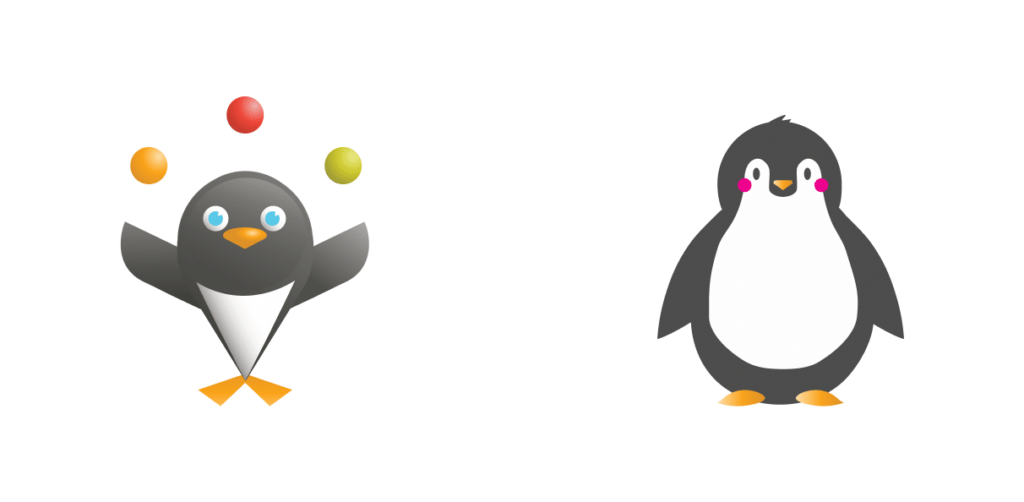
And just like that, Tucker the penguin was reintroduced to the brand to the celebration of employees—many of whom have been with the company for decades—and the customers, who had come to love the personality that the penguin brought to Procare’s products.
Integrating the Penguin
While we weren’t involved with the decision to remove Tucker, we were already working through new illustration styles for the website. We’d chosen the Family Values pack from Blush Design. It was a great solution, affording us diversity in characters and age ranges, with lots of kids included in the illustration system.
And at the time—2020—it was also important that our animation system included masks. With the click of a button, we could have every illustration wearing a mask or not. This supported our plan to do a mask takeover of the site, then be able to remove the masks without recreating every illustration.
So we had all of these cute kids and scenes…

And it was time to reintroduce Tucker…
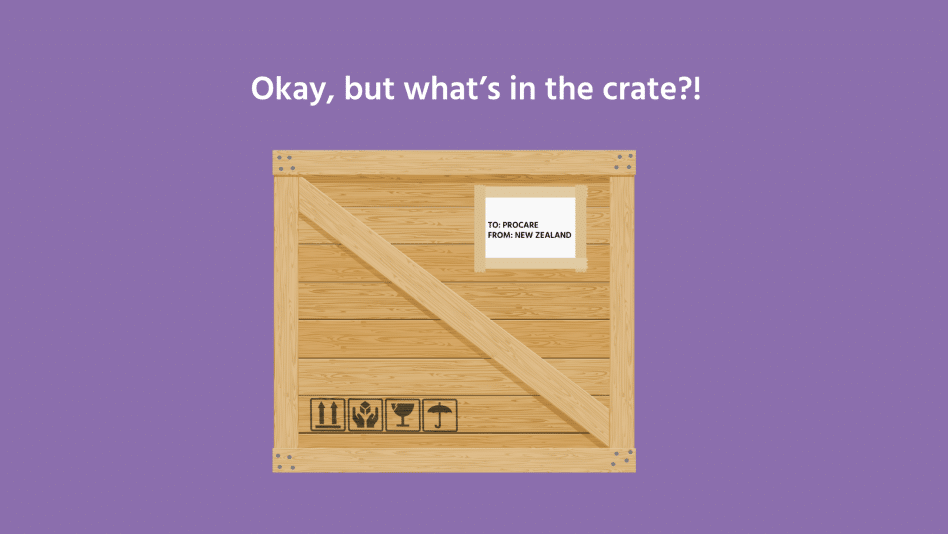
And here he is…
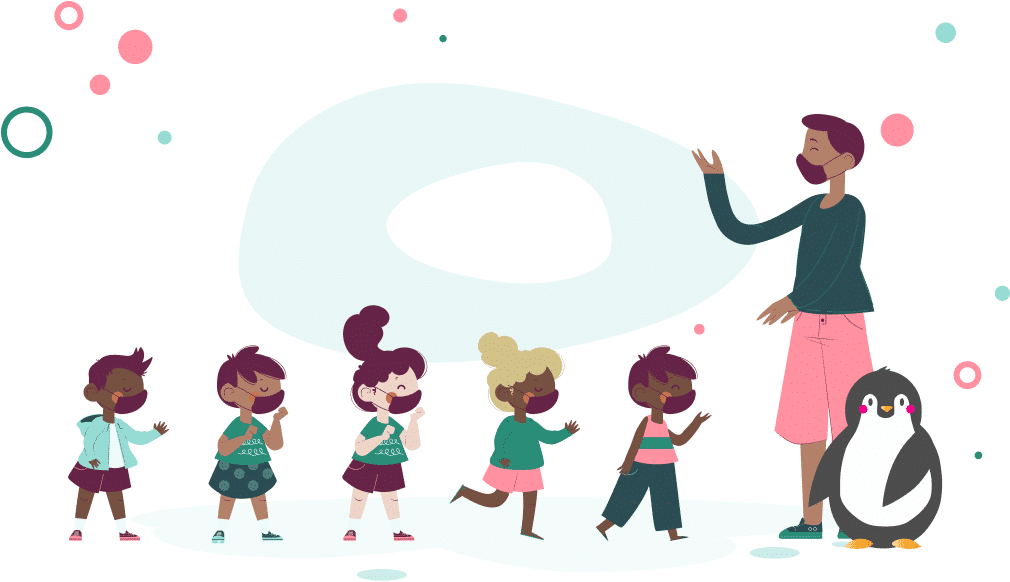
The Story
After we had illustrated Tucker in various arrangements to help bring him back into the website and branding system, the client asked, “can you write a children’s book about Tucker?”
Heck yes we can.
So we pitched our story boards—Tucker helping with contactless check-in, Tucker helping child care centers be state and federal compliant, Tucker showing how easy it is to run payroll and support your staff.
We pitched.
There were crickets.
Then the client said, “We want, like a real children’s book. One with a story and a message, and it should rhyme and be fun!”
Oh. That sounds like a lot more fun. It also sounds harder, but in the most fun, creative way. Okay, give us a minute to regroup.
Again, we’re still in 2020, the pandemic is raging and no one is going outside. If you are looking for inspiration, you’d best hope your neighbors and your family provide that to you because we weren’t seeing anyone else at that time. Our client gave us a list of children’s books to buy and read. We had some hilarious adult story hours as we read books to each other over Zoom and shared the best illustrations.
And then, just like every day, the mail carrier came. And, just like every day, our next door neighbor children, three little kids, came running out to see him in their costumes. Every day was something different, from princess costumes to superhero costumes, to matching clothes for all three of them. It was an adorable ray of sunshine in our days. The kids would meet the mail carrier and help him deliver all the mail to the circle.
“What if we dress up Tucker?” I said to Joey one day. We started drawing tank tops and t-shirts, button down shirts and flip flops. We added hats and sunglasses. We added a grass skirt. Every time we laughed we thought we might be on to something. Around this time I remembered my pre-quarantine friends and their little boy who love to dress up in pink sparkles and rainbows.
And with that we had the concept: Tucker is at day care as a helper, as we always intended when adding him back to the brand—and now we had a narrative: Tucker loves to get all dressed up for work. He wears some wild outfits, and most people like it, but we all know that one person who has to pick on other people. We named our antagonist Lester and like that, we had a story on our hands.
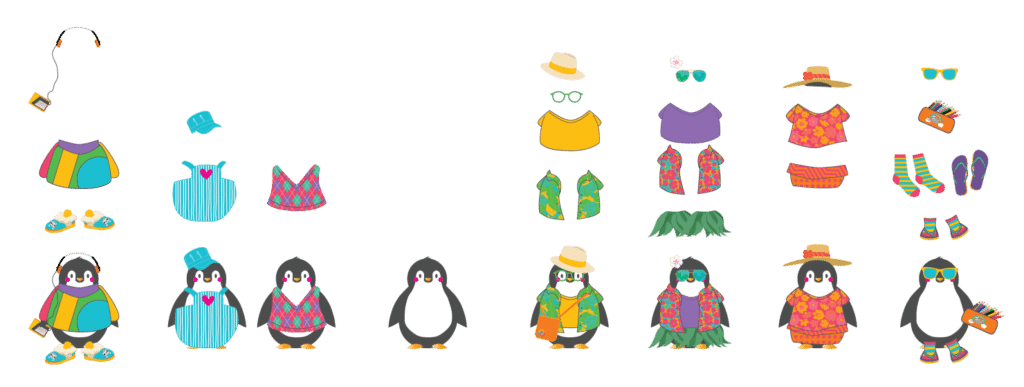
Teamwork & Collaboration
This will remain one of our favorite projects of all time—it was just plain fun, but it also allowed us to stretch our creativity and use some tools we don’t normally use as web and UX people. It’s also so much fun when you’ve worked with a client for a few years and you can do something different that still supports your overall mission and goals together.
Everyone on the team contributed a line or a joke or an illustration idea. One night we were trying to rework the way that Lester was taunting Tucker. We needed a word that conveyed that his clothes were “odd”, but once you start rhyming, you have to find a word that has the meaning and the cadence to fit the narrative. Steve was in the backyard cutting down bushes and I hear him yell, “BIZARRE!?! What about bizarre?” Bingo. That’s what we needed.
Joey wrote the pure-poetry line, “To wear what you want is what’s truly wise”. We finished the book with Michelle’s line, “Let’s all celebrate how being different can be wonderful and chic.”
One of my favorite drawings happened when I gave a stack of post-it notes to Joey with some illustration direction. The drawing was really expressive, just toothpaste everywhere. The final illustration is *chef’s kiss*.
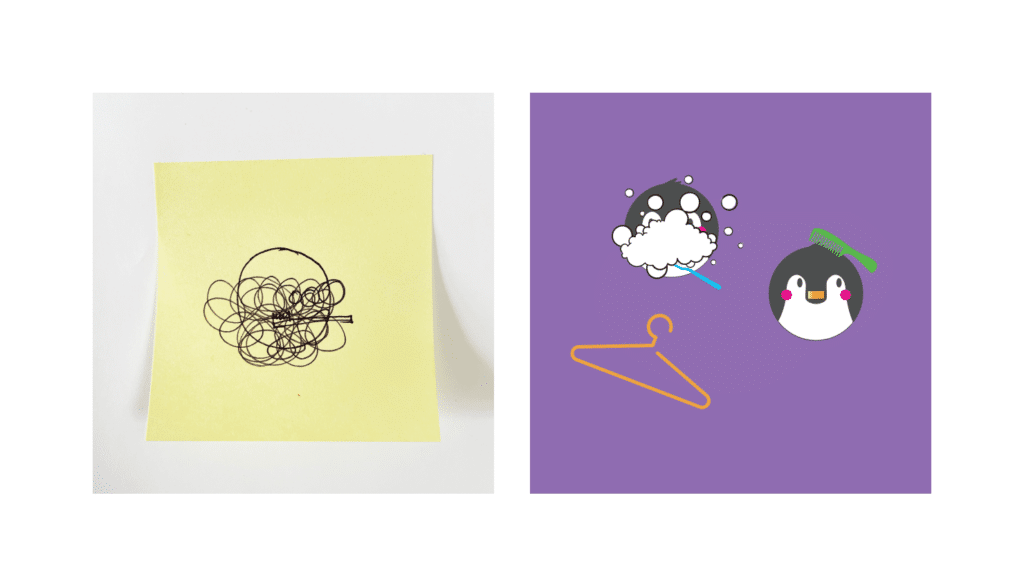
Penguin Research
We are big on research informing our decisions. We have a UX researcher on staff that runs down all sorts of data for us. Learning all about penguins was no different.
We had usage rules for Tucker — he wasn’t allowed to speak. We didn’t want a Clippy situation and penguins don’t have a very nice voice. His hair always points to the right. However, once he became a character with a house and an office and a car, we got to augment his personality. He drives a Smart car, he likes to listen to classic techno, he has a full and vibrant life, and loves working with kids.
We learned all about penguins. Emperor penguins are BIG! Standing almost 4 feet tall.

Penguins can get covid. Penguins just eat fish. We did add an orange and a canned drink to his cafeteria picture, but penguins shouldn’t really eat oranges (or energy drinks, probably). One person on the client team suggested that someone seated next to him in the illustration is pinching her nose.

To keep Tucker moving along we created a character sheet using components in Sketch (and later migrated it to Figma). With a click of a button you can change Tucker’s facial expression, flipper position, and add some accoutrements.

Tucker’s character illustration guidelines. Click to expand.
Having a character illustration system allowed us to do a quick animation for the client’s winter newsletter.

Critical Acclaim
The book is only available through Procare Software, although it has an ISBN number if they ever want to sell it through bookstores. The client used it in a sign-up giveaway for The Business of Childcare Conference and other events.
We were able to give copies to the children who were our inspiration, and have fun conversations with their parents.
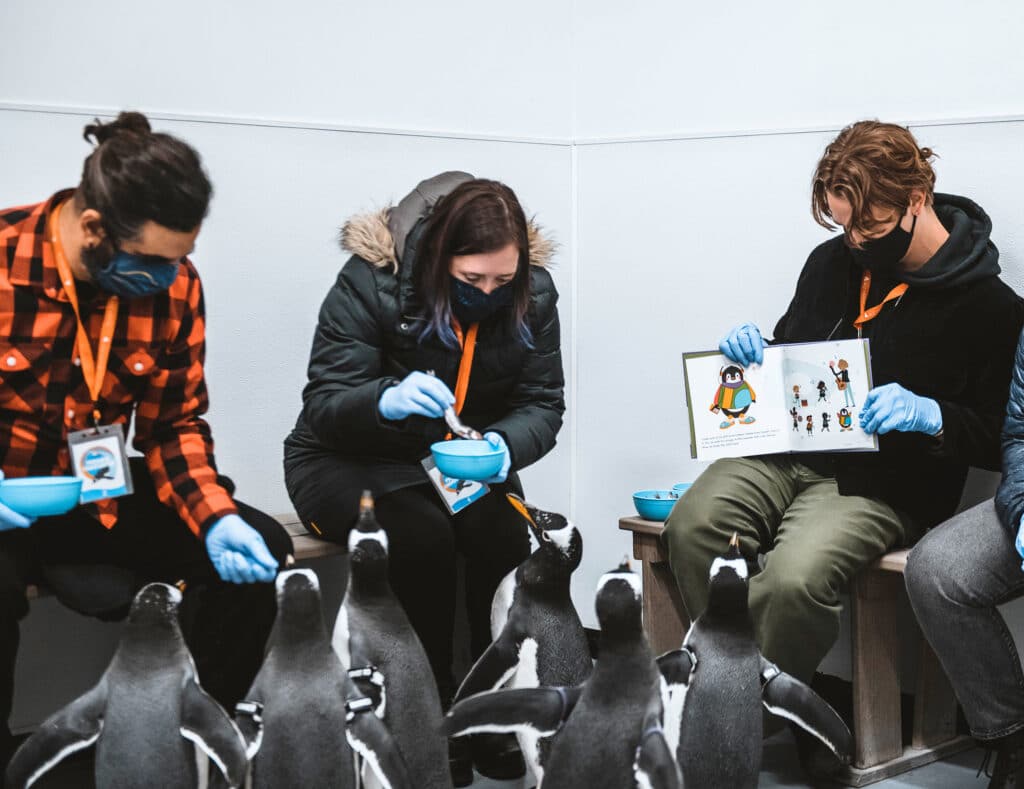
Our team reading our the Tucker book to gentoo penguins at the Loveland Aquarium.
We also took the whole team to meet real penguins and share our book with them. We learned even more about penguins—like the fact that they are heavy dense little dudes. A gentoo penguin stands 30 inches tall and weighs about 30 pounds!
Want to see the book for yourself?
Thank you so much to the entire project team:
Client Team
Michelle Burrows
Francie Dudrey
Amelia Schrader
Anchor & Alpine Team
Joey Johnston
Amber Sawaya
Steve Sawaya
Amanda Nelson
Printing
Printed in Salt Lake City at Seagull Printing with Rhyan Adams.
ISBN: 978-0-578-24966-7
Do you have a bizarre creative project that you need a solid team for?
Let’s connect and see if we can create something memorable and fun for your brand.
